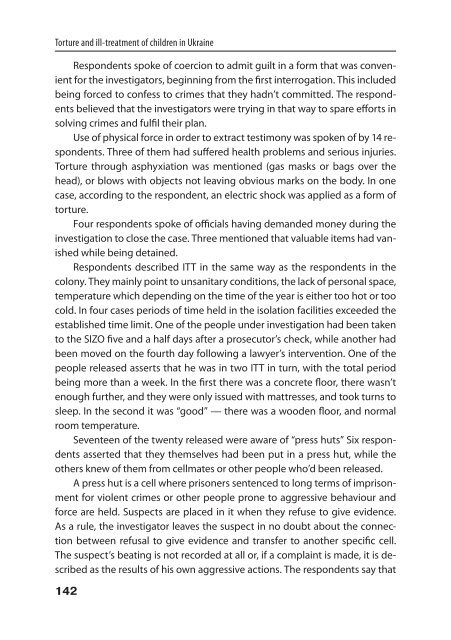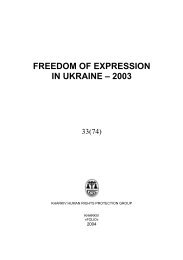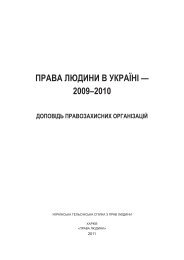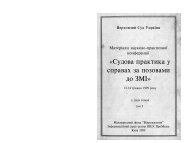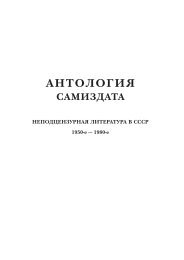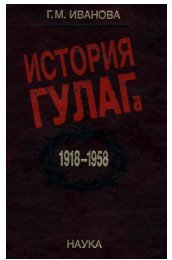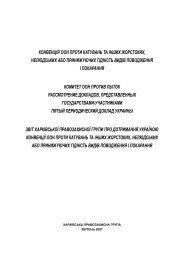TORTURE AND ILL-TREATMENT OF CHILDREN IN UKRAINE
TORTURE AND ILL-TREATMENT OF CHILDREN IN UKRAINE
TORTURE AND ILL-TREATMENT OF CHILDREN IN UKRAINE
- No tags were found...
Create successful ePaper yourself
Turn your PDF publications into a flip-book with our unique Google optimized e-Paper software.
Torture and ill-treatment of children in UkraineRespondents spoke of coercion to admit guilt in a form that was convenientfor the investigators, beginning from the first interrogation. This includedbeing forced to confess to crimes that they hadn’t committed. The respondentsbelieved that the investigators were trying in that way to spare efforts insolving crimes and fulfil their plan.Use of physical force in order to extract testimony was spoken of by 14 respondents.Three of them had suffered health problems and serious injuries.Torture through asphyxiation was mentioned (gas masks or bags over thehead), or blows with objects not leaving obvious marks on the body. In onecase, according to the respondent, an electric shock was applied as a form oftorture.Four respondents spoke of officials having demanded money during theinvestigation to close the case. Three mentioned that valuable items had vanishedwhile being detained.Respondents described ITT in the same way as the respondents in thecolony. They mainly point to unsanitary conditions, the lack of personal space,temperature which depending on the time of the year is either too hot or toocold. In four cases periods of time held in the isolation facilities exceeded theestablished time limit. One of the people under investigation had been takento the SIZO five and a half days after a prosecutor’s check, while another hadbeen moved on the fourth day following a lawyer’s intervention. One of thepeople released asserts that he was in two ITT in turn, with the total periodbeing more than a week. In the first there was a concrete floor, there wasn’tenough further, and they were only issued with mattresses, and took turns tosleep. In the second it was “good” — there was a wooden floor, and normalroom temperature.Seventeen of the twenty released were aware of “press huts” Six respondentsasserted that they themselves had been put in a press hut, while theothers knew of them from cellmates or other people who’d been released.A press hut is a cell where prisoners sentenced to long terms of imprisonmentfor violent crimes or other people prone to aggressive behaviour andforce are held. Suspects are placed in it when they refuse to give evidence.As a rule, the investigator leaves the suspect in no doubt about the connectionbetween refusal to give evidence and transfer to another specific cell.The suspect’s beating is not recorded at all or, if a complaint is made, it is describedas the results of his own aggressive actions. The respondents say that142


